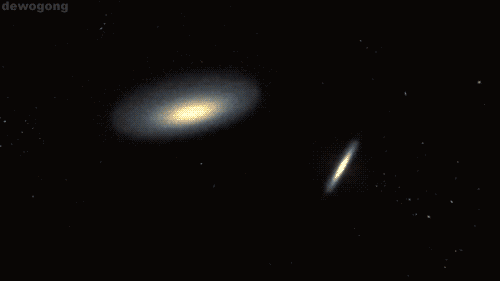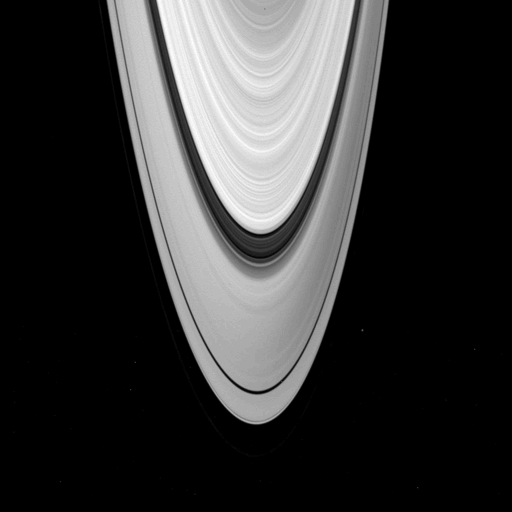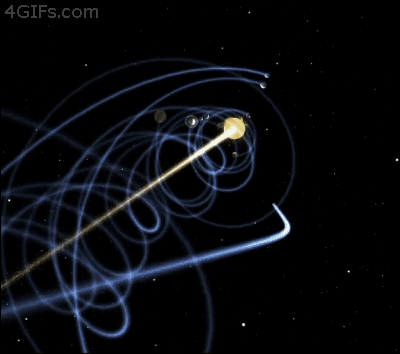A personal temporospatial claudication for Young Wizards fandom-related posts and general space nonsense.
288 posts
Latest Posts by outofambit - Page 10


Russian shorthand. 19th c.

White dwarfs polluted with planetary debris
The Hubble Space Telescope has found chemical evidence for the building blocks for rocky planets in an extremely unusual place: the atmospheres of two burned-out stars. Called white dwarfs, these stars are small, dim shadows of stars that would have once been like our sun, and they reside 150 light-years from Earth in the young star cluster of Hyades. Hubble’s spectroscopic observations identified silicon and low levels of carbon, both of which are strong indicators of a rocky material similar to that which makes up Earth. “When these stars were born, they built planets,” said Jay Farihi, lead author of the study, “and there’s a good chance they currently retain some of them… Based on the silicon-to-carbon ratio in our study, we can actually say that this material is basically Earth-like.” The material is thought to have ended up in the atmosphere of these stars after they collapsed into white dwarfs, and the larger planets in their solar system nudged asteroids into star-grazing orbits. The stars’ gravitational pull tore the asteroids apart, and the pulverised debris fell into a ring around the white dwarfs and were eventually funnelled inwards to pollute the stars themselves. The discovery suggests that rocky planets may commonly assemble around stars, and may help us to understand what will happen to our solar system in five billion years, when our own sun burns out.

Happy Earth Day: Earthrise
One of the most famous aspects of the Apollo 8 flight was the Earthrise picture that was taken as they came around for their fourth orbit of the Moon. This was the first time that humans had taken such a picture whilst actually behind the camera, and it has been credited with a role in inspiring the first Earth Day in 1970. It was selected as the first of Life magazine’s ‘hundred photos that changed the world’.
Taken by Apollo 8 crewmember Bill Anders on December 24, 1968, showing the Earth seemingly rising above the lunar surface. Note that this phenomenon is only visible from someone in orbit around the Moon. Because of the Moon’s synchronous rotation about the Earth (i.e., the same side of the Moon is always facing the Earth), no Earthrise can be observed by a stationary observer on the surface of the Moon.
This is literally my favorite ever. Best post. Good.
King Arthur: I actually think he was probably not a wizard. But he definitely knew about wizardry and did his best to support it.
Gawain: Definitely a wizard. DEFINITELY a wizard. Specializes in liaising with nonhuman species living on earth, go-to diplomat when aliens show up.
Kay: Nope, Kay’s...

Kepler-62 Has Two Water Worlds Circling in its Habitable Zone
NASA’s Kepler spacecraft has discovered two planets that are the most similar in size to Earth ever found in a star’s habitable zone — the temperate region where water could exist as a liquid.
The finding, reported online today in Science1, demonstrates that Kepler is closing in on its goal of finding a true twin of Earth beyond the Solar System, says theorist Dimitar Sasselov of the Harvard-Smithsonian Center for Astrophysics in Cambridge, Massachusetts, who is a member of the Kepler discovery team.
Both planets orbit the star Kepler-62, which is about two-thirds the size of the Sun and lies about 1,200 light years (368 parsecs) from the Solar System. The outermost planet from the star, Kepler-62f, has a diameter that is 41% larger than Earth’s and takes 267 days to circle its star. The inner planet, Kepler-62e, has a diameter 61% larger than Earth’s and a shorter orbit of 122 days.
Kepler detected the planets by recording the tiny decrease in starlight that occurs when either of them passes in front of their parent star. Astronomers used those measurements to calculate the planets’ relative size compared to that star.
Continue: Worlds Apart
<3
Young Wizards meta: In "So You Want to Be a Wizard", where is the Lone Power's HQ?
At the Top of the Rock observation deck, and I’m debating with my sister over which building was probably the one that held the Dark Book in the overshadowed Manhattan…


hologram: Saturn’s rings, photographed by Cassini, 18th January 2007.
Images taken as Cassini moves from one side of the ring plane to the other, neatly showing how the rings look in reflected and transmitted light (brighter and darker, respectively).
Image credit: NASA/JPL/SSI. Animation: AgeOfDestruction.


First-Ever High Resolution Radio Images of Supernova 1987A
On February 23, 1987, the brightest extragalactic supernova in history was seen from Earth.
Image 1: An overlay of radio emission (contours) and a Hubble space telescope image of Supernova 1987A. Credit: ICRAR (radio contours) and Hubble (image.) Image 2: Radio image at 7 mm. Credit: ICRAR Radio image of the remnant of SN 1987A produced from observations performed with the Australia Telescope Compact Array (ATCA).
Now 26 years later, astronomers have taken the highest resolution radio images ever of the expanding supernova remnant at extremely precise millimeter wavelengths.
Using the Australia Telescope Compact Array radio telescope in New South Wales, Australia, Supernova 1987A has been now observed in unprecedented detail. The new data provide some unique imagery that takes a look at the different regions of the supernova remnant.
“Not only have we been able to analyze the morphology of Supernova 1987A through our high resolution imaging, we have compared it to X-ray and optical data in order to model its likely history,” said Bryan Gaensler, Director of CAASTRO (Centre for All-sky Astrophysics) at the University of Sydney.
So You Want To Be a Wizard: All This for a Pen? and A White Hole Dies
Deep Wizardry: UNDER THE SEA/WITH YOU AND ME/AND YOU’RE GONNA DIIIIIE!
High Wizardry: I Wanna Be a Wizard Like My Big Sis! (Creates New Species)
A Wizard Abroad: So You Want to Learn About Irish...


(MIKE FUCK OFF WE’VE BEEN OVER THIS ALREADY I H8 U NO LOVE)
im cryin this is what im doing with my life wowowow a ma zing !!
Thank you for the welcome! This is one of my oldest fandoms (started reading around the time Wizard's Dilemma came out) and I can't believe it took me this long to make a blog for it... :) I love this fandom's tumblr presence. You're all such lovely people!
Started this blog because everyone needs a place to dump their space porn and YW fandom stuff….right?
NGC 4725, NGC 4747, and NGC 4712




NGC 2403 in Camelopardalis



Galactic Poetry
The downfall of living in an urban center, is that all we get to see during the night are blankets of cloud (possibly smog), and if we’re lucky, a few stars. What artist Sanjeev Sivarulrasa is trying to show in his work, Night Light, is what we are missing out on; a magical world, swimming through space, with galaxies and nebulae bejeweling the cosmos.
It is visual poetry.
The artist uses astrophotography to capture the various forms and colours of the stars and planets outside of an observatory setting. According to journalist Becky Rynor, it is as if he is capturing the great masterpieces that our ancestors would see; a natural art. Space does not have to be sacred scientific ground; it can also be merely another aesthetic aspect of our lives, that inspires people to think about the greater world around us. The simple observer plays as big of a role, as the great scientist. When this right to observe is taken away from us, via artificial city lights, we have to make the effort to go to the sources such as countryside’s, forests, lakes, and mountains. We must go to the nature, to connect back to ancient ideas of aesthetic beauty, and renew the senses. Sanjeev’s astrophotographs are to be seen as meditative, bringing awareness to our daily surroundings, and that sometimes, we need to take a step back, and see the bigger picture.
Night Light is currently exhibited at Karsh-Masson Gallery, until the 5th of May, 2013, and there will be an artist talk on the 24th of March, 2013 -Anna Paluch

Started this blog because everyone needs a place to dump their space porn and YW fandom stuff....right?